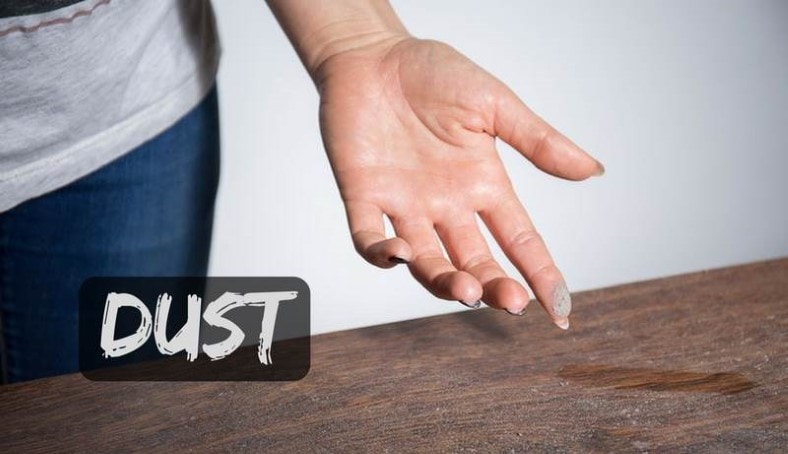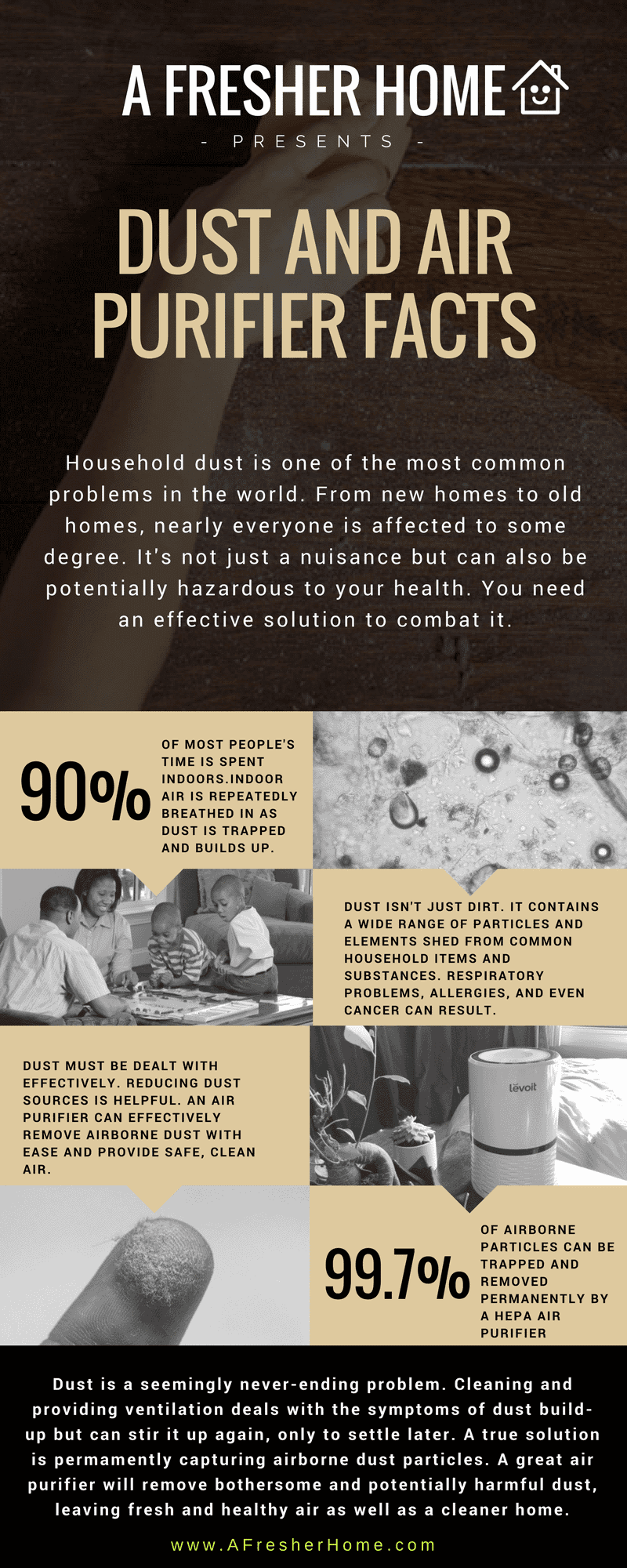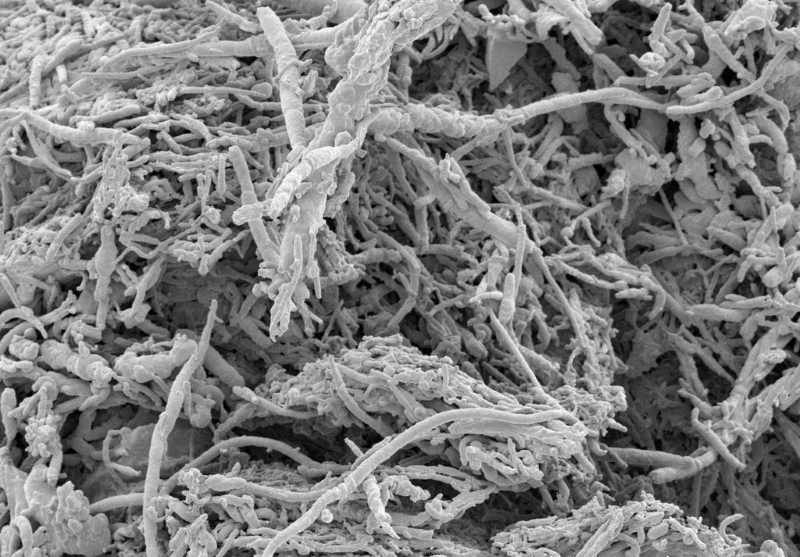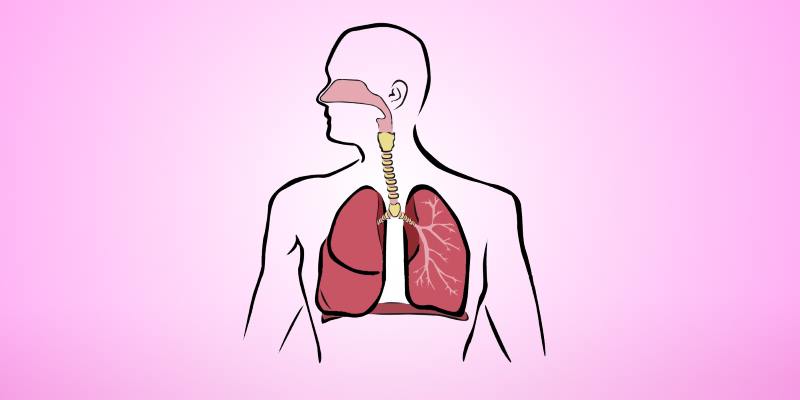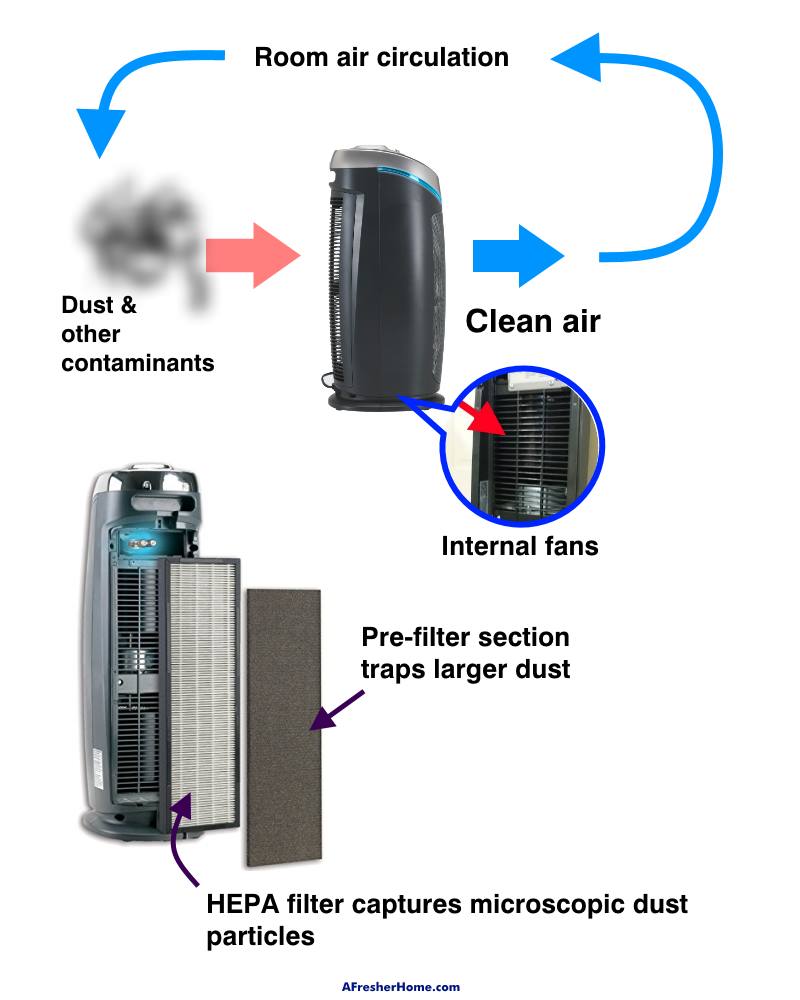Dust is an everyday problem for many of us. I used to suffer terribly from coughing because of dust blown into my work area from the ventilation system in my old job.
As I learned later, dust contains a variety of debris, pollutants, and allergens that are bad to breathe in. One of the best things I’ve ever done is to invest in a high-quality air purifier.
But what if you’re not convinced yet? Do air purifiers reduce dust? That’s a great question I’m going to answer for you.
Contents
Infographic – Air purifier and dust facts
Do air purifiers reduce dust?
The short answer is yes, air purifiers reduce dust and help eliminate the problem.
The critical reason is that they eliminate dust particles – both visible and microscopic – from the air. Airborne particulates pass through them and are caught permanently in filters. Larger dust elements like hair and fabric fibers get trapped in a front section called the pre-filter.
It’s important to note that I’m referring to filter-based purifiers, not ionizers or ozone generators. The reason is that while those have a purpose under certain conditions, they’re not nearly as effective as a traditional (filter-based) purifier.
Note that air purifiers aren’t a 100% solution – it’s impossible for them to remove all air contaminants, like dust that has settled on surfaces. I’ll cover the other steps you should take for the most benefit as we go along.
What is in dust?
A microscopic image of common household dust. It’s not made of any one element. However different dust sources may generate higher levels of some particles than others. These microscopic particulates are not just a cleanliness issue but can aggravate your respiratory system, cause allergies and sickness, and even cause cancer. Without a good way to trap and remove dust, you’ll constantly breathe in more and more.
It’s helpful to understand exactly the problem you’re dealing with. Why? Because common household dust isn’t often made of large, visible elements that are easily vacuumed or swept away permanently.
Many dust particles are actually microscopic in size which means ordinary cleaning and vacuuming won’t capture them.
Additionally, different dust sources can bring toxicity and other potentially harmful effects due to chemical elements and organic threats.
Sources of dust
As you might have already guessed, there are a lot of ways dust gets into your home:
- Dust mite by-products (dust mite feces and body parts)
- Pet dander & human shed tissue/skin
- Home construction materials
- Carpet dust fibers
- Fabric & clothing fibers
- Plant materials
- Central heating and cooling system air ducts
- Outdoor elements
- Hair fibers
…and the list goes on and on. There are just too many to list!
The problem can come from nearly anything that breaks down into small enough particles that can be carried by wind and air.
A surprisingly large amount of dust actually comes from the outdoors. Tracked-in dirt from outside is a great example of how you bring these types of particles into your home without knowing it.
Toxicity and health dangers
Respiratory and other health problems increase a lot when you inhale dust. Microscopic dust particles are more easily brought into our respiratory passageway. Coughing, allergies, nose problems, and much more are some of the symptoms caused by it. People with asthma are especially vulnerable to it too.
Because most Americans spend up to 90 percent or more of their day indoors, it’s easy to see why dust could potentially bring health risks over time.
Dirty, trapped air increases in dust content over time and you’re constantly breathing it in.
As dust settles, it’s less of a risk but once disturbed it’s airborne again and you’ll be inhaling more of it yet again. People suffering from asthma, emphysema, and other health issues can struggle with even a small increase in dust levels.
Many materials, many dust sources
Man-made materials like fabric, home materials, and carpet distribute particles that break off and enter your air. Many are potentially toxic and contain chemicals like formaldehyde.
In fact, a 2016 study found that it can contain up to 10 household chemicals!
Some are known carcinogens (cancer-causing agents), meaning you’re at risk for even more health problems down the road!
Dust cleanliness problems
The more you let your dust problem go unchecked, the more you’ll need to clean! I hate dusting so I use my air purifier nearly 24 hours a day for best results.
I really hate having to dust every so often! It’s a boring chore and just feels like I could be spending the time elsewhere.
I’m sure nearly everyone knows how that feels – walking in and seeing cabinets, tabletops, and shelves coated with that same old dust we hate.
The thing is, if left untreated you’ll have the same problem, day after day, week after week – more cleaning. That goes for nearly anywhere you live: If not dealt with effectively, you’ll never escape the headache of dust problems.
I finally had enough of the dust particles that were constantly building up from fabrics and my bathroom towels. Vacuuming helps, but it definitely isn’t the easiest or most efficient way.
So I decided to try an air purifier and I’ll share my experiences below.
How air purifiers reduce dust
Diagram showing how an air purifier circulates air and removes dust in a room. Shown here is the AC4825 air purifier, a great example of an effective product. I’m an owner and have had great success with it keeping dust levels down where I live!
As I mentioned above, a good purifier is a great choice for reducing dust.
They work by using internal electric fans to continuously circulate air in a room and filter the air as it moves through them. Dusty and dirty air is pulled in and forced through the filters, trapping dusty permanently.
Clean air leaves the exhaust side of the purifier and the cycle continues. In most cases, it takes a few hours with an appropriately sized purifier to circulate & clean the air in a room.
The time it takes depends on the model, the size of the room, and the Clean Air Delivery Rate (CADR) rating of the purifier (if provided).
HEPA and pre-filter sections
A pre-filter section contains a thin mesh material that first traps larger elements like household dust and pet air before they reach the HEPA filter. This is especially helpful because when dealing with air quality problems like this the pre-filter will likely become dirty relatively soon.
In that case, the pre-filter will prevent the HEPA filter section from becoming dirty too rapidly and will extend its life. Many purifiers sold today allow the pre-filter to be replaced separately instead of having to replace both, saving money.
You may be able to vacuum the dust trapped in the pre-filter section as I’ve done before.
The High Efficiency Particulate Air (HEPA) section is made of very dense fibrous material. The HEPA standard ensures it can trap 99.7% of the unwanted particles entering it, down to 0.3 microns in size. (A micron is 1/1,000,000 of a meter).
Working together they form a highly effective way to capture dust both large and microscopic in size.
My experiences with an air purifier and dust
My air purifier’s dust cleaning ability (top photo) after only a week or 2. I was amazed at how much dust it trapped! Truly wonderful, and it helps a lot to keep my place cleaner and the air healthier. Bottom photo: after it became nearly used I vacuumed the pre-filter to get more life out of it.
I bought the highly recommended GermGuardian AC4825 to try out in my own home – the results where excellent! The amount of dust it captured was crazy!
After about 2 weeks or so I opened the rear filter cover to check it out for curiosity’s sake. I was almost shocked by how much dust was on the pre-filter. How much dust had I been breathing in all this time?
Now I normally leave mine running for at least 8-9 hours a day and even longer if I’m inside working all day or while I’m out.
